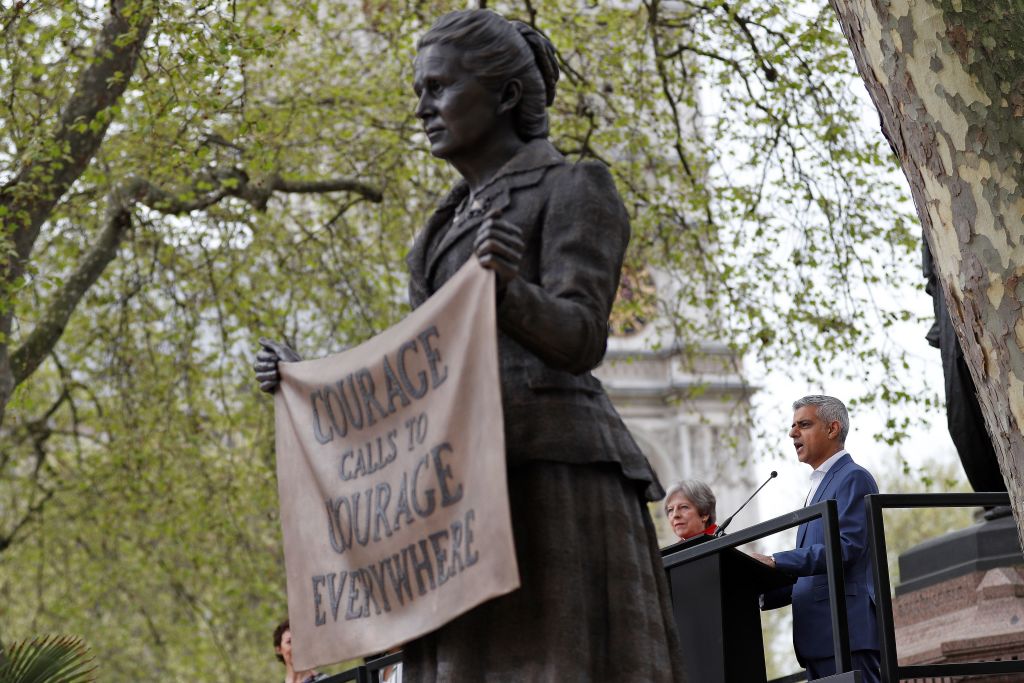London mayor Sadiq Khan promised today that he will begin the process of pulling down ‘inappropriate’ statues around London – after Bristolians dumped the statue of slave trader Edward Colston in the river at the weekend.
To investigate London’s landmarks, Khan has created a ‘Commission for Diversity in the Public Realm’ which will review statues and street names in the capital to make sure they reflect the diversity of its people. Khan said he expected the commission to find that it’s ‘not appropriate to be memorialising, or to be celebrating’ certain figures, especially those with a racist past and links to the slave trade.
Mr S wonders though if Khan’s commission should perhaps start with statues erected by the London mayor himself.
In 2018, he proudly unveiled a statue of the suffragist Millicent Fawcett – the first-ever statue in Parliament Square of a woman. At the time, Khan declared that ‘from the very first week of my Mayoralty, I supported Caroline Criado Perez’s campaign to put up a statue of a woman in Parliament Square, and I’m so proud that the day of its unveiling is now upon us.’
But while Fawcett is mostly celebrated today for the campaign for women’s suffrage, less well-known is her ardent support of the British Empire. Fawcett was such a fan of Empire, that in 1901 she was commissioned by the government to lead an investigation into British concentration camps in South Africa during the second Boer war, after high mortality rates and appalling conditions were reported there.
The camps had been created after the British began conducting a scorched earth policy during the war, which involved burning down villages, homes and crops to root out a guerrilla campaign. As a result tens of thousands of men, women and children were displaced and forcibly moved into the camps.
When she arrived, Fawcett thought the camps were deeply necessary for the war, and her eventual report said the commission had a ‘generally favourable’ view of them. She also suggested that many of the deaths were caused by the ‘unsanitary habits’ of the Boers. Around 28,000 Boers died in the camps.
But if the Boers were unfairly maligned by Fawcett, at least they were mentioned in her eventual report. When she returned to England, Fawcett said that she had investigated ‘every camp’ in the country. In fact, she failed to visit a single camp which held Black Africans, nor did her report address the conditions in which they were held. In total, an estimated 14,000 to 25,000 Africans are thought to have died in the camps that Fawcett ignored.
Fawcett didn’t have much thought for the participation of Black Africans in society after the war either. In 1899, she wrote that after the settlement of the war,
‘I hope we are too deeply pledged to the principle of equal privileges for all white races to abandon it.’
In short, Fawcett is exactly the kind of person you would expect Sadiq Khan’s statue-toppling commission to take aim at. Or perhaps the London mayor will suddenly understand the value of historical nuance when it comes to his own pet project…







Comments